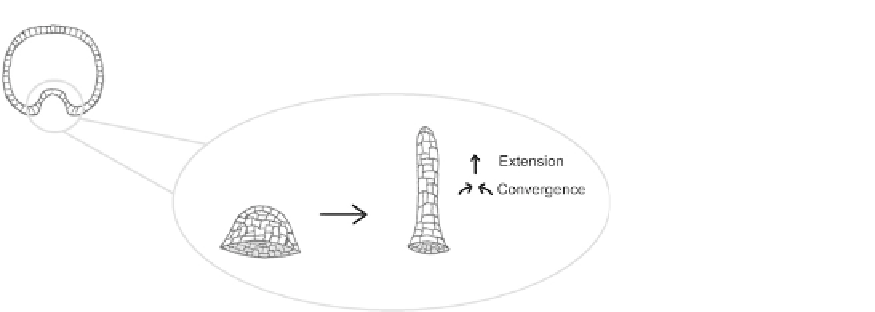Biology Reference
In-Depth Information
FIGURE 16.3
Convergent
extension in the elongation of
the gut primordium in sea
urchin embryos.
(
Figure 16.3
). Rearrangement of neighbour relationships is also seen during the evagination
of insect imaginal discs
5
and also during the closure of holes (Chapter 17).
One of the best-studied examples of epithelial convergent extension is the elongation of
the germ band in Drosophila melanogaster. The germ band is the part of the embryo that
will form the segmented trunk of the future larva, and during development it thins and
extends to curl around the inside of the egg and to bend back on itself (
Figure 16.4
). As it
does so, cells converge towards the ventral midline and intercalate between one another
so that the tissue as a whole extends along the midline. The integrity of the epithelium is
retained as the cells rearrange,
6
which means that they never acquire 'free' edges and cannot
move by the action of lamellipodia and filopodia in the way that converging mesenchyme
cells do.
FIGURE 16.4
Convergent extension in the early embryo of D. melanogaster. The processes of convergence and
extension happen together, and are separated on the diagram simply for clarity of labelling.


